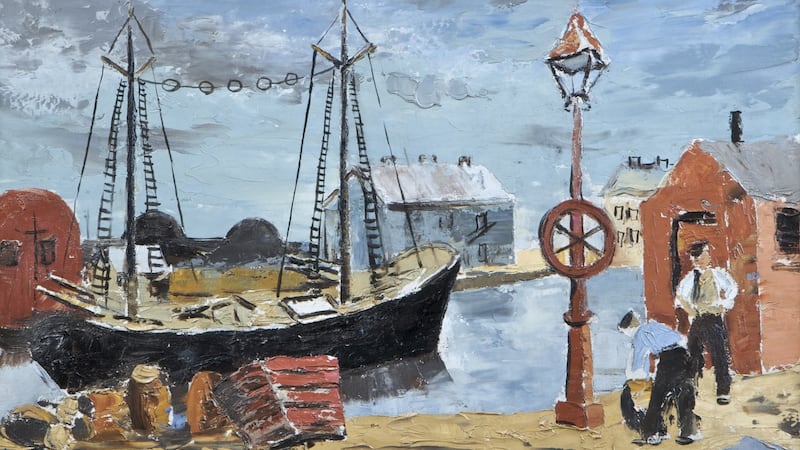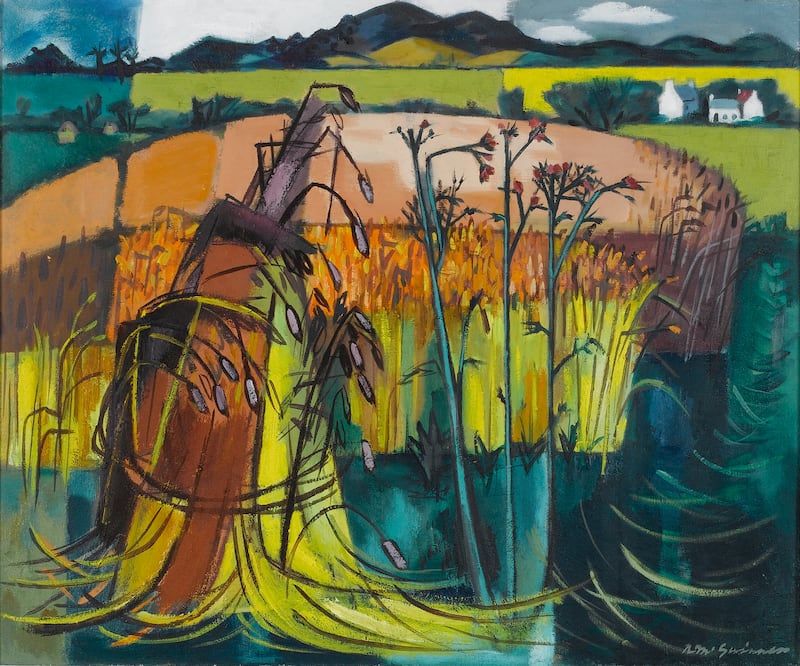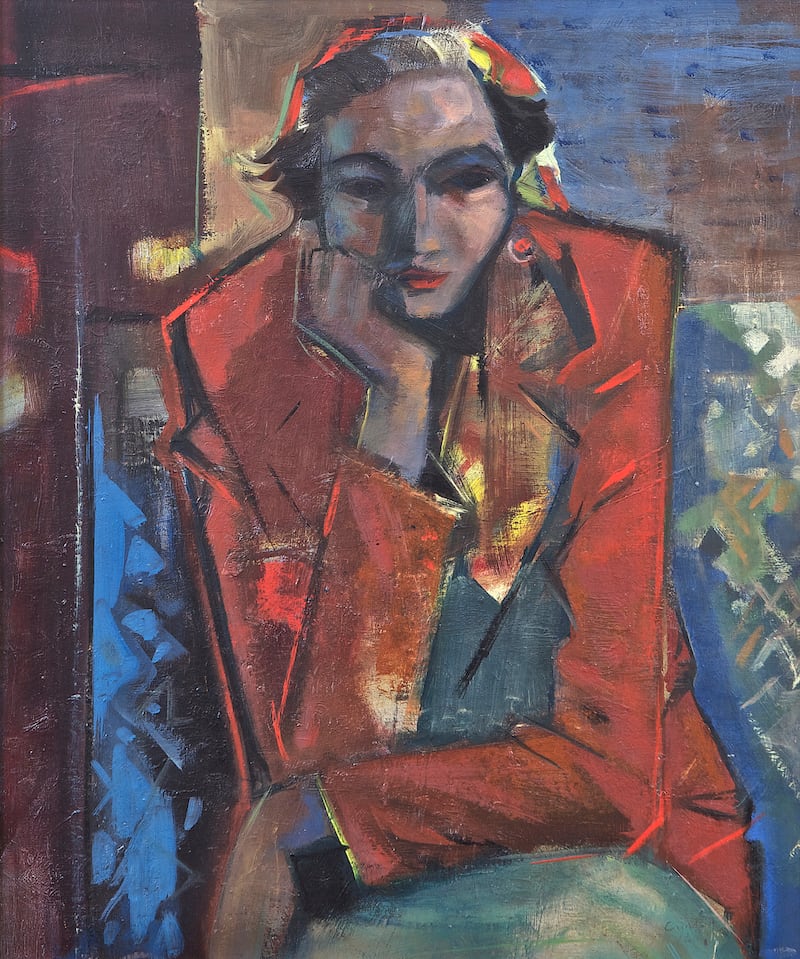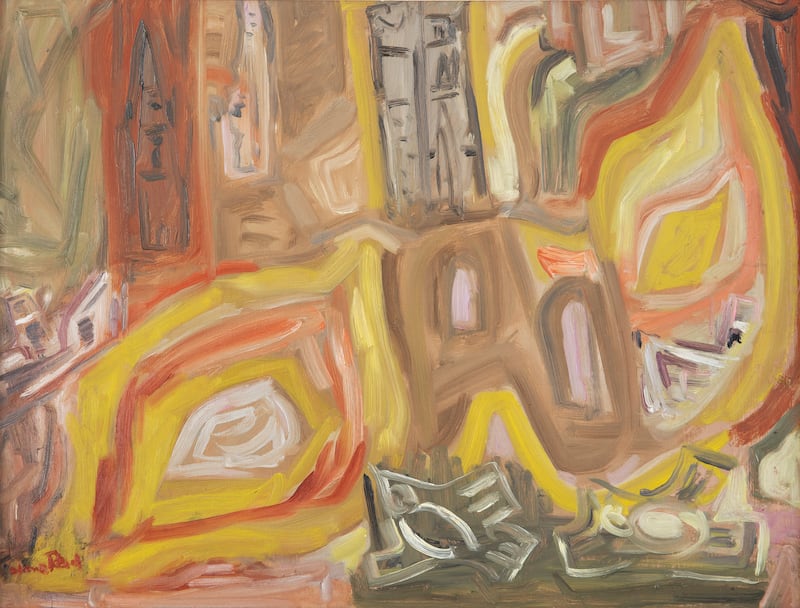The Birth of Modernism in Irish Art 1920-1960
An exhibition curated by David Britton. State Apartments Galleries, Dublin Castle, Dublin. Until August 18th dublincastle.ie
★★★★
Although the title makes it sound like a blockbuster museum show, The Birth of Modernism in Irish Art 1920-1960 is on a modest scale and offers an oblique slant rather than a comprehensive survey of a huge and tangled subject.
Therein lies its strengths, in fact. It’s a comfortable fit in the more or less domestically scaled rooms of the State Apartments, and its constituent works are largely sourced from comparably domestic settings: drawing on decades of personal experience the curator, David Britton, has approached many individuals with requests to borrow pieces, so that pretty much everything visitors will see is from private collections, and not usually accessible.
The result is in some ways predictable – most of the relevant names you would expect to encounter are there – but often represented by rarely seen examples of their work. So even if you consider yourself well-acquainted with early-20th-century Irish art (the nominal span is 1920 to 1960), there are surprises enough to make it well worth a look.
Roderic O’Conor’s Le Châle Bleu, for example, from 1920 or 1921, is a first-rate portrait study of Renée Honta, a key figure in his life – they married in 1933, though they had been involved from 1915 or earlier. O’Conor, a post-impressionist who lived and worked mostly in France, had a tendency both to overwork paintings and, conversely, to not quite resolve them, but Le Châle Bleu is perfectly realised and indicative of his immense potential, a potential that was, sadly, never entirely realised.
Move on a generation to George Campbell, a painter who, unlike O’Conor, easily adapted cubism to his personal style. That is, rather than becoming a cubist, he absorbed aspects of it that appealed to him. One wouldn’t automatically think of him as a portrait painter but Madge, included in the show, is a terrific painting and a fine, characterful portrait of his wife. The liveliness of Campbell’s handling of colour and tone, and the darting, angular rhythms of the structure, are surely related to his passion for music – and his musical ability, for he was a proficient guitarist.
Personally connected
Equally, Nano Reid’s Boyne Shapes is a radiant work, aglow with off-whites, pinks and yellows, wholly removed from the murky, muddy tones with which she is more usually associated. It’s also quintessential in centring on the densely packed archaeological terrain of the Boyne valley, with its layers of overwritten history, which she knew intimately and with which, as a Drogheda woman, she felt personally connected.
Perhaps the pre-eminent modernist advocate in Ireland, Mainie Jellett, is represented by a beautifully austere Composition. She is usually associated with Evie Hone, and Hone’s painting in the show, Dianthus, is quietly impressive if less definitive. Norah McGuinness’s paintings are dominated by her strong sense of graphic design, which can come across as a limitation, but they are crisply articulated, expertly composed and economically expressed. Her colour sense is effective if unsubtle. She had a designer’s instinct for problem-solving. A financially independent free spirit, she excelled at book illustration, set design (the Abbey and the Peacock) and window displays (Brown Thomas), but painting was her passion. The First Sheaf is a fine example of her abilities, including her fluent use of line.




Jack B Yeats was a modernist outside the orthodoxy. His We Are Leaving You Now, centred on the sad, downward glance of a central figure on public transport of some kind, is presumed to refer to emigration (it dates from 1928, arguably Yeats’s best decade). Gerard Dillon could get overly concerned with pictorial allegory, but his included work, Girl at the Well, is richly invested with meaning without any conspicuous heavy lifting. A girl in a western landscape, cottages in the background, carries a water bucket. It’s a simple, direct and resonant image.
White Stag Group
Britton makes room for Kenneth Hall and Basil Rákóczi of the White Stag Group. They were a significant influence on Irish art, including on Patrick Scott. Also Joan Jameson (an exceptionally good work), an early Louis le Brocquy tapestry, surrealist chameleon Colin Middleton, more surrealism from the enigmatic, occasionally brillliant Nevill Johnson, a Fr Jack Hanlon, a Beatrice Glenavy (that seems to echo or prefigure Edward Maguire), and a terrific little Kathleen Cox glazed pottery bust, Daphne. Seveal quirky asides include a Micheál Mac Liammóir watercolour.
Inspiration works in mysterious ways. It is by no means one of his best paintings, but Harry Kernoff’s anecdotal, almost caricaturish 1947 rendering of two contented drinkers, A Bird Never Flew on One Wing (on closer inspection its background comprises an inventory of the names of Dublin pubs), reputedly played a surprising role in popular culture. David Britton relates that it used to hang in a well-known public house. One day the pub was visited by an American West Coast script-writer on sabbatical in Dublin. He was working on a science-fiction project for television.
While enjoying a quiet pint, he mulled over the problem he was grappling with. He was trying to figure out the appearance of a humanoid protagonist from a remote planet, someone distinctly apart but also identifiably close. His eyes drifted across Kernoff’s painting. The younger figure of the two, on the right, had notably angular features, including his prominent ears, and a dark, definite fringe. Hie piercing eyes met the viewer’s with a knowing look. At this point, one presumes, the writer reached for his notebook and did a quick sketch. Under it he wrote, simply: Mr Spock.





















